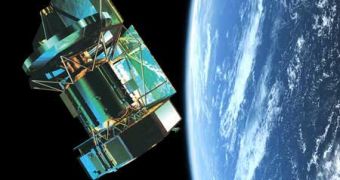When completed, it will be the biggest space telescope ever build, with a mirror twice as big as that of the famous Hubble Optical Space Telescope, and it will help astronomers study cold icy dust, resident in some of the most remote corners of the universe. This automatically implies that the Herschel Space Observatory would also be the most powerful telescope ever launched into space, being able to detect light emitted by space dust having temperatures as low as -250 degrees Celsius.
It will be 7 meters high and 4.3 meters wide, with a mass of about 3,25 tons, and will be placed in an area of the solar system known as the 2nd Lagrangian point of the Sun-Earth system, 1.5 million kilometers away from Earth, pointing in the direction opposing the Sun. Originally called FIRST, or Far-Infrared and Sub-millimeter Telescope, the Herschel Space Observatory represents a project initiated by the European Space Agency, and is scheduled to launch into space in the middle of this year.
As it will operate in the infrared spectrum, the Herschel will have the capability of observing areas of close galaxies where star-formation processes are taking place, and even how galaxies were forming in the early life of the universe, more than 10 billion years ago. It is the first space telescope to operate in a sub-millimeter spectrum, wavelengths situated between the far-infrared and microwave spectrum. The Earth atmosphere is opaque to light in the 0.055 to 0.67 millimeters wavelength, thus studies of cold dust formations from the surface of the Earth are practically impossible.
Leading work group member on dust in local galaxies, Dr. Loretta Dunne, from the University of Nottingham's School of Physics and Astronomy, argues that cold cosmic dust has an important role in the dynamics of galaxy and star formation by cooling hot gas, in order for it to collapse into cosmic bodies. Just look at Earth, it is practically a massive ball of dust! How is dust created, how long could it remain in a stable form and how much of the universe's mass it represents are aspects extremely important while one is trying to understand why the universe is looking like it does today.
The Herschel Space Observatory was named after the British astronomer Sir William Herschel, the first to discover infrared light and the planet Uranus. Its 3.5-meter mirror gives it the capability of collecting long-wavelength radiation, that is usually emitted by very cold space objects. Visible light filtered through a mass of cosmic dust is immediately converted into infrared light. Space dust is usually composed of extremely small particles of carbon and silicate minerals, ejected into interstellar space during supernova explosions.
During its three-year mission, the Herschel Space Observatory will make observations on light reflected by cold dust, coming from more than 100,000 galaxies, gravitational lensing effects, galaxies containing ultra-massive black holes capable of stopping the star formation process, and the birth of stars in the galaxies of the Local Group.

 14 DAY TRIAL //
14 DAY TRIAL //